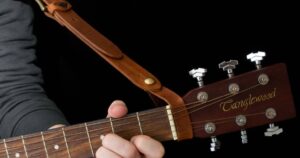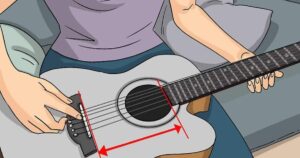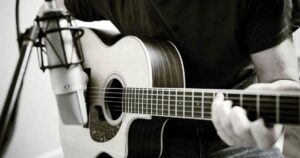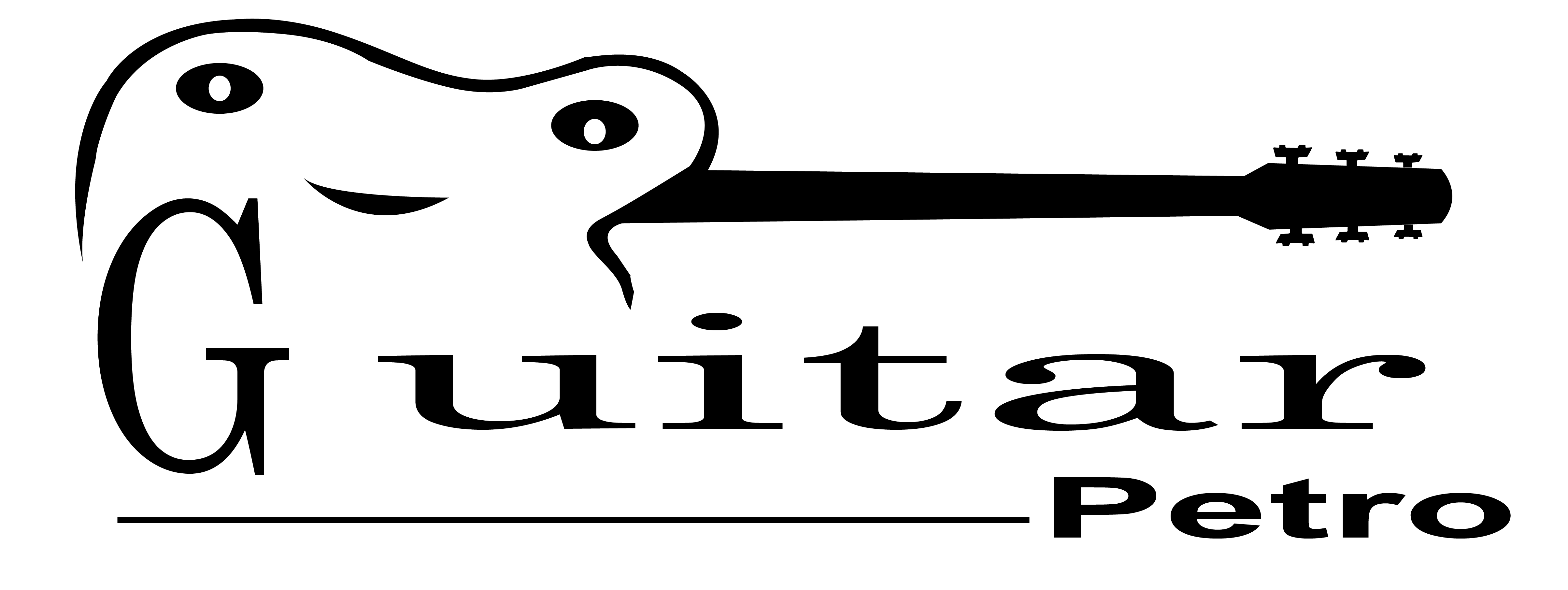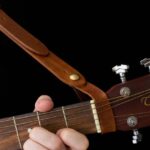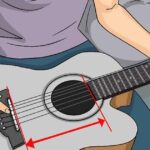Learning How To Play Easy Songs On Acoustic Guitar refers to the process of acquiring the basic skills and techniques required to strum and finger pick simple songs on an acoustic guitar, often involving open chords and straightforward patterns.
Strumming the strings of an acoustic guitar, creating melodies that resonate with your soul, and impressing your friends with your musical prowess – that’s what learning how to play easy songs on an acoustic guitar can offer. It’s a musical journey accessible to beginners and can be your ticket to serenading your way through gatherings.
Mastering easy songs on the acoustic guitar is an excellent starting point for aspiring guitarists. It builds foundational skills that can pave the way for more complex pieces. From campfires to cozy nights at home, these songs provide a musical backdrop to various moments in life. Learning the basics of chords, rhythm, and strumming will set you on the path to becoming a skilled guitarist.
Getting Started with Acoustic Guitar
Before you dive into playing easy songs, it’s essential to set up your acoustic guitar and get familiar with its parts and functionality. This will make the learning process smoother and more enjoyable.
Choose the Right Guitar
Selecting the right acoustic guitar is crucial. Consider factors like body shape, size, and tonewood. Acoustic guitars come in various shapes and sizes, such as dreadnought, concert, and parlor, each with its unique tonal characteristics. Smaller guitars are more comfortable for beginners, while larger ones may offer richer tones. The choice of tonewood, like spruce, mahogany, or cedar, also affects the guitar’s sound. Try out different guitars at a music store to find the one that suits you best.
Tune Your Guitar
Tuning your guitar is the first step to creating beautiful music. The standard tuning for an acoustic guitar, from low to high, is E-A-D-G-B-E. Use an electronic tuner or a tuning app to ensure that your guitar strings are in the correct pitch. Regular tuning is essential to make your chords and melodies sound right.
Learn Guitar Anatomy
Understanding the various parts of your acoustic guitar is essential. Here are some of the key components:
Headstock
The top of the guitar, which houses the tuning pegs and holds the strings.
Neck
The long, narrow section of the guitar that connects the headstock to the body.
Fretboard
The flat surface on the neck where you press down on the strings to create notes and chords.
Frets
The metal strips on the fretboard that divide it into different sections. Pressing the strings against the frets changes the pitch of the notes.
Body
The large, hollow portion of the guitar that amplifies the sound.
Soundhole
An opening in the body where the sound resonates and escapes.
Bridge
The part of the body where the strings are anchored.
Understanding these components will help you follow instructions and tutorials more effectively.
Basic Guitar Chords

To play easy songs on your acoustic guitar, you’ll need to learn a few basic chords. Chords are the building blocks of music, and mastering them is a fundamental skill for any guitarist.
Open Chords
Open chords are some of the most common and easy-to-learn chords for beginners. They are played with open strings, making them accessible and versatile. Here are a few essential open chords to get you started:
C Major (C)
- Place your index finger on the first fret of the B string.
- Place your middle finger on the second fret of the D string.
- Place your ring finger on the third fret of the A string.
- Strum from the A string down to the high E string.
G Major (G)
- Place your index finger on the second fret of the A string.
- Place your middle finger on the third fret of the low E string.
- Place your ring finger on the third fret of the B string.
- Place your pinky on the third fret of the high E string.
- Strum all the strings.
D Major (D)
- Place your index finger on the second fret of the G string.
- Place your middle finger on the second fret of the high E string.
- Place your ring finger on the third fret of the B string.
- Strum from the D string down to the high E string.
E Minor (Em)
- Place your middle and ring fingers on the second fret of the A and D strings.
- Strum all the strings.
These open chords are the foundation for countless songs. Practice transitioning between them to build your chord-changing skills.
Barre Chords
While open chords are great for beginners, barre chords add depth and variety to your playing. These chords involve pressing down all the strings at a particular fret with one finger. Here’s a common barre chord shape:
a. F Major (F)
- Bar the first fret with your index finger across all the strings.
- Place your middle finger on the second fret of the G string.
- Place your ring finger on the third fret of the A and D strings.
- Place your pinky on the third fret of the G string.
- Strum from the A string down to the high E string.
Barre chords require more finger strength and dexterity, so they might be challenging for beginners. However, practicing them is essential for advancing your guitar skills.
Easy Songs for Beginners
Now that you’ve learned the basic chords, it’s time to start playing some easy songs. Here are a few songs with simple chord progressions that you can practice:
Horse with No Name by America
Horse with No Name is a classic song with a straightforward chord progression. The entire song uses just two chords: Em and D6/9. Here’s how to play it:
Verse:
- Em
- D6/9
Chorus:
- Em
- D6/9
The strumming pattern for this song is also quite simple. You can use a basic down-strumming pattern or add a little variation to make it more interesting.
Knocking on Heaven’s Door by Bob Dylan
Bob Dylan’s “Knocking on Heaven’s Door” is another iconic song that’s perfect for beginners. It primarily uses the chords G, D, Am, and C. The chord progression for the entire song is as follows:
Verse and Chorus:
- G
- D
- Am
- G
- D
- C
You can experiment with strumming patterns or even try fingerpicking for a more mellow rendition of the song.
Three Little Birds by Bob Marley
Bob Marley’s “Three Little Birds” is a reggae classic with a delightful and simple chord progression. The chords used in this song are A, D, and E. Here’s the chord progression for the entire song:
Verse:
- A
- D
- A
- E
- A
The song has a relaxed, upbeat vibe, making it an excellent choice for beginners.
Good Riddance (Time of Your Life) by Green Day
Green Day’s “Good Riddance (Time of Your Life)” is known for its melodic acoustic guitar part. The chords used in this song are G, Cadd9, D, and Em7. Here’s the chord progression for the entire song:
Verse and Chorus:
- G
- Cadd9
- D
- G
- Em7
- G
- Cadd9
- D
This song combines simple chords with a memorable melody, making it a great choice for beginners.
Tips for Playing Easy Songs

Learning to play easy songs on your acoustic guitar can be a fun and rewarding experience. Here are some tips to help you make the most of your practice:
Start Slow
When you’re learning a new song, it’s essential to start at a slow tempo. This allows you to focus on the chord changes and transitions. As you become more comfortable, gradually increase the tempo.
Use a Metronome
A metronome is a valuable practice tool. It helps you keep a steady tempo and improves your timing. You can find metronome apps or use physical metronome devices to assist your practice.
Practice Regularly
Consistency is key to improving your guitar skills. Set aside dedicated practice time each day to work on your songs and chord changes. Even short, daily practice sessions can lead to significant progress.
Play Along with the Original Recording
Playing along with the original recording of a song can be a great way to develop your sense of timing and rhythm. It also helps you understand how the chords fit into the song’s structure.
Learn Basic Strumming Patterns
In addition to chord changes, it’s essential to learn basic strumming patterns. Different songs may require various strumming techniques, so practice a variety of strumming patterns to expand your repertoire.
Don’t Get Discouraged
Learning to play the guitar takes time and patience. Don’t be discouraged if you encounter challenges or slow progress. Keep practicing and celebrate your achievements, no matter how small they may seem.
Seek Guidance
Consider taking guitar lessons from a teacher or using online tutorials and resources. A teacher can provide personalized guidance, while online resources offer a vast library of lessons and tips.
Easy Songs Apps and Resources
To make your journey of playing easy songs on the acoustic guitar more accessible, there are several apps and online resources available:
Yousician
Yousician is a popular app that offers lessons, exercises, and songs for guitar players of all levels. It provides interactive feedback to help you improve your playing.
Ultimate Guitar
Ultimate Guitar is a comprehensive website and app that provides chord sheets and tabs for a vast library of songs. You can find chords, lyrics, and even transposable chord sheets to match your vocal range.
JustinGuitar
JustinGuitar, created by Justin Sandercoe, is a well-known online platform offering free guitar lessons and tutorials. It’s an excellent resource for beginners and includes a structured learning path.
Songsterr
Songsterr is an app and website that provides interactive guitar tabs for a wide range of songs. You can play along with the tabs and adjust the tempo to your liking.
FAQ’s
What are easy songs for beginners on acoustic guitar?
Beginner-friendly songs typically use basic open chords like G, C, and D. Classics like Wonderwall by Oasis or Knocking on Heaven’s Door by Bob Dylan are great starting points.
How can I learn to play easy songs on acoustic guitar?
You can start by practicing simple chord progressions, strumming patterns, and watching online tutorials. A good practice routine and patience are key.
Do I need musical experience to play easy songs on an acoustic guitar?
No, you don’t need prior musical experience. Easy songs are designed for beginners, and with dedication, anyone can learn to play them.
Conclusion
Learning how to play easy songs on an acoustic guitar is a rewarding and accessible journey for beginners. It offers a gateway to the world of music, allowing you to strum and sing your favorite tunes with simplicity and joy. Whether you aspire to impress friends at a gathering or simply want to create your own musical moments, this is an excellent starting point.
With the right dedication and practice, you can quickly grasp the fundamental chords and strumming techniques needed to play familiar songs. It’s a stepping stone to more advanced guitar playing and can be a source of immense personal satisfaction. So, grab your acoustic guitar, start with the basics, and let the music flow. Your musical adventure awaits, and easy songs on the acoustic guitar are your first, melodious steps into the world of guitar playing.


